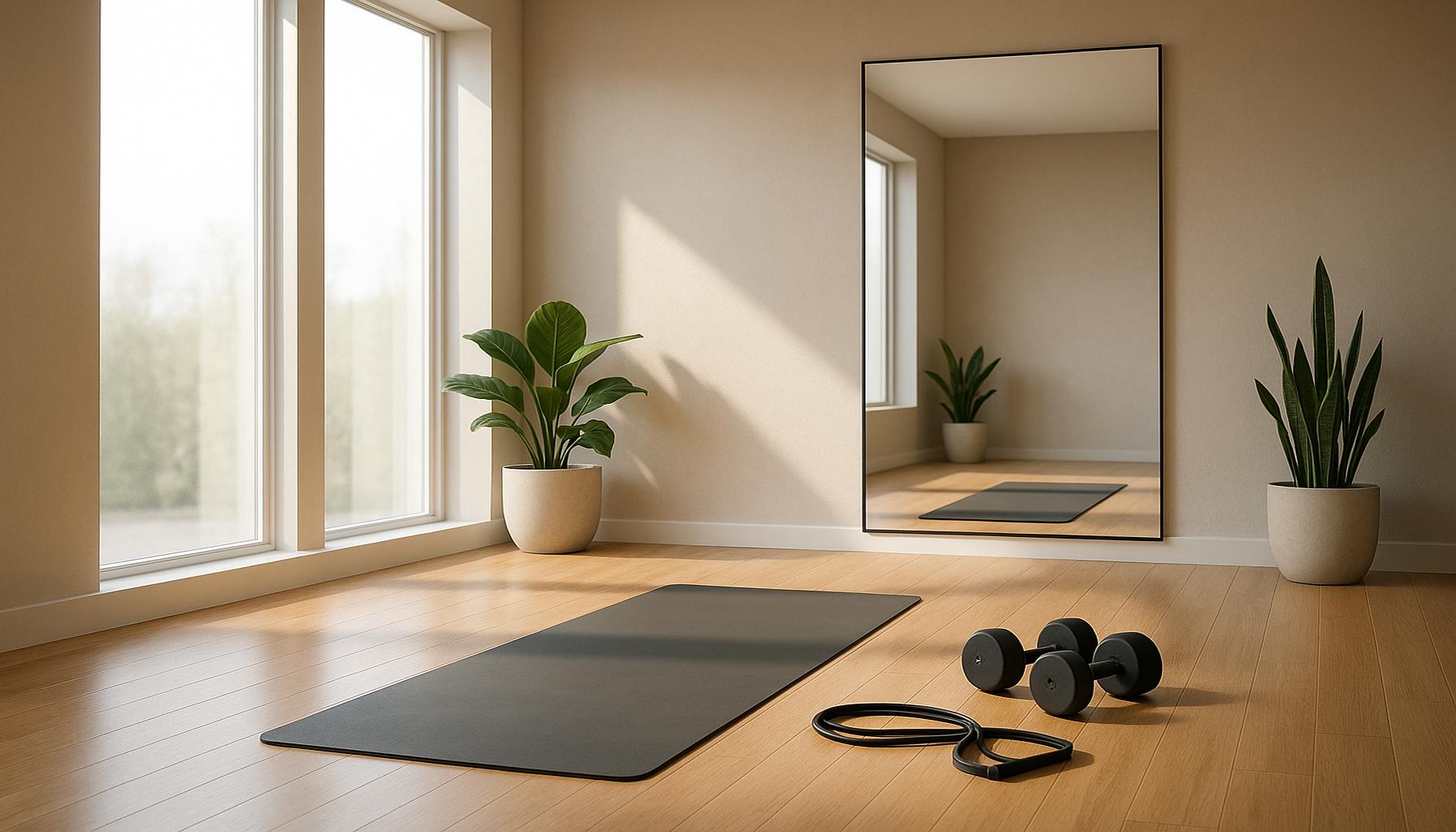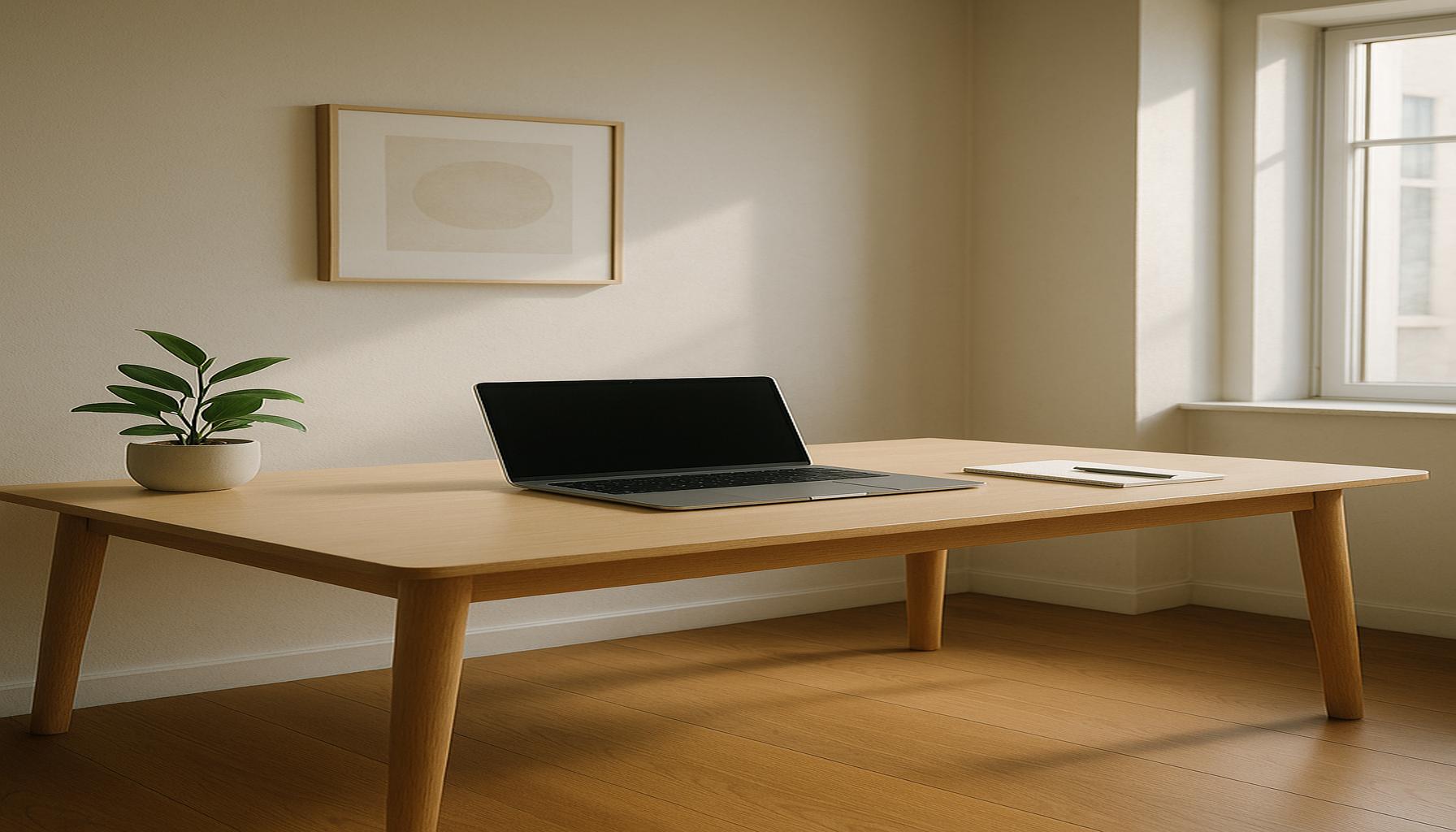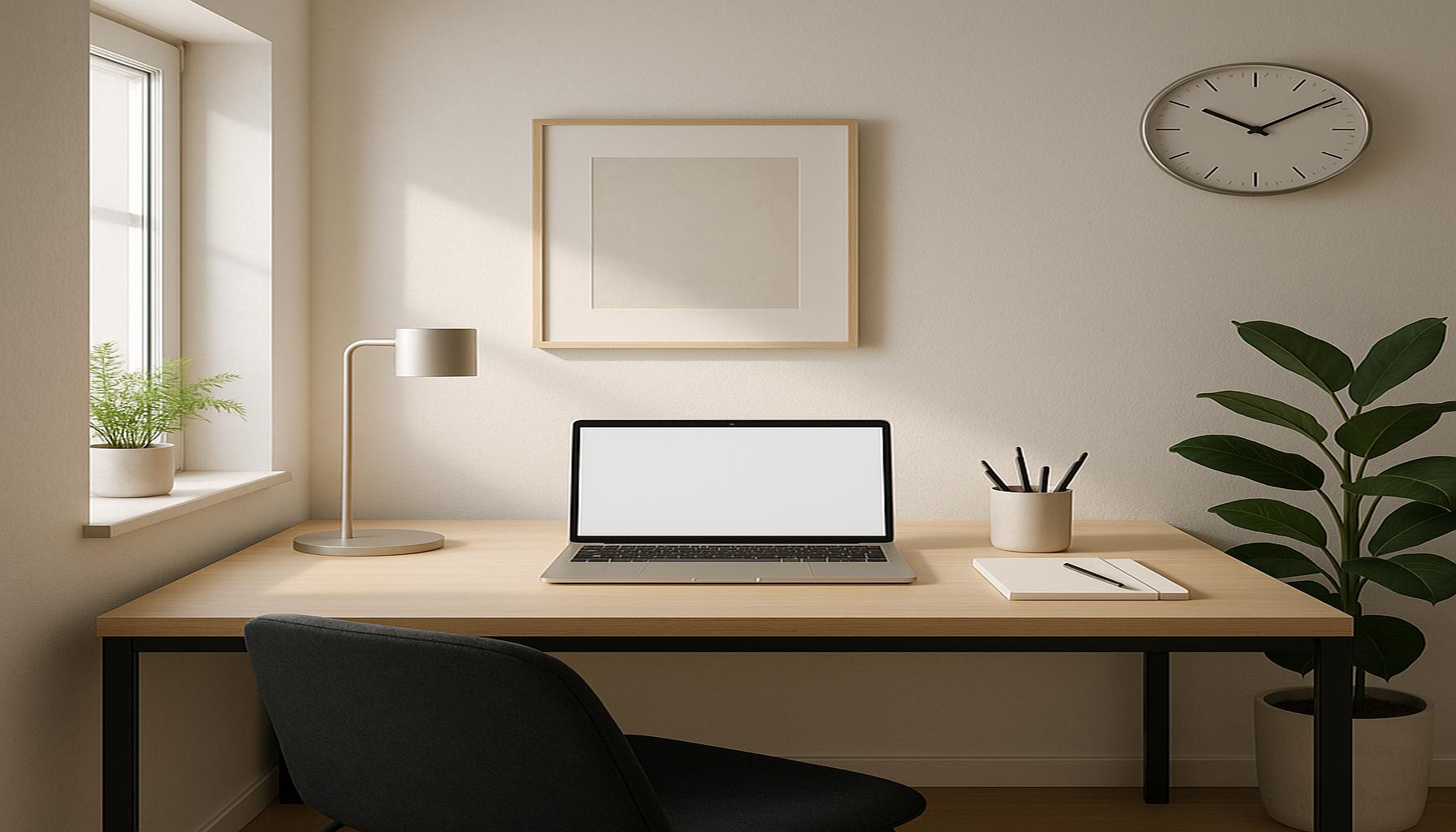Simplifying Life: Minimalist Organization Strategies for Small Spaces
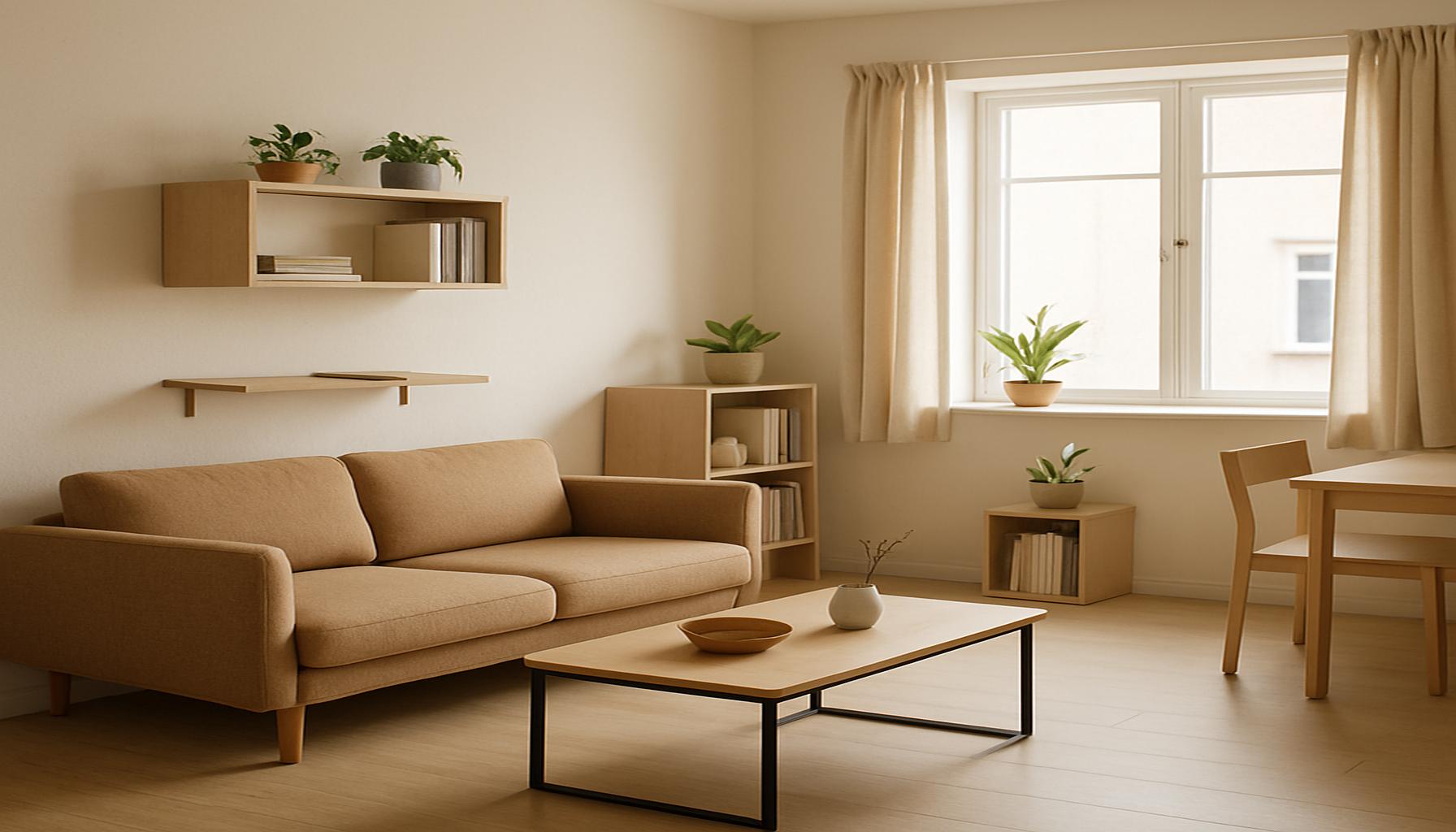
Creating a Calming and Organized Environment
In a world where space often feels limited, creating a calming and organized environment becomes essential. Embracing minimalism in small areas can lead to significant improvements in both your living space and mental well-being. By adopting specific strategies, you can transform cluttered corners into peaceful oases that promote relaxation. This reimagining of space not only makes it more visually appealing but can also enhance your quality of life significantly.
Consider these benefits of minimalist organization:
- Enhanced productivity: A tidy space allows you to focus on what truly matters. Studies have shown that people working in organized environments have higher levels of concentration and efficiency. For instance, a clear desk can help you concentrate better on tasks, reducing the time spent searching for misplaced items.
- Reduced stress: Fewer distractions lead to greater tranquility. When your surroundings are clutter-free, your mind can be clearer, decreasing feelings of anxiety. Many individuals report feeling calmer and more in control when their environments are orderly.
- Time savings: Knowing where everything is saves precious minutes each day. The average person spends about 15 minutes a day looking for misplaced items, which adds up over time. Streamlining your space can reclaim these lost moments for more enjoyable activities.
Small spaces present unique challenges that often hinder organization. Limited square footage can lead to overcrowded rooms and a sense of chaos. However, effective minimalist strategies can help you optimize what you have through:
- Smart storage solutions: Utilize vertical spaces, hidden compartments, and multi-functional furniture. For example, investing in a bed with storage drawers can free up significant floor area in a small bedroom, allowing you to keep only the essentials within reach.
- Decluttering techniques: Regularly assess your belongings to determine what you truly need. The “one in, one out” rule is a practical approach to prevent accumulation. If you buy a new item, consider parting with something you no longer use.
- Mindful purchasing: Focus on quality over quantity when adding items to your space. In a consumer-driven society like the United States, it’s tempting to indulge in impulse buys. Instead, adopting a more thoughtful approach to purchasing can enhance the longevity of your possessions and ensure they serve a meaningful purpose.
As we explore various techniques for simplifying life, you’ll discover how thoughtful organization can breathe new life into your small spaces. Whether through DIY projects, professional organizational services, or simply partaking in local workshops, there are endless resources available to aid in your minimalist journey. Moreover, connecting with community groups focusing on minimalism can inspire you to make relevant changes. Join the journey towards a more minimalist lifestyle and find out how it can elevate your daily experience into one that is not only productive but also fulfilled.
DIVE DEEPER: Click here to discover more about the benefits of minimalism</p
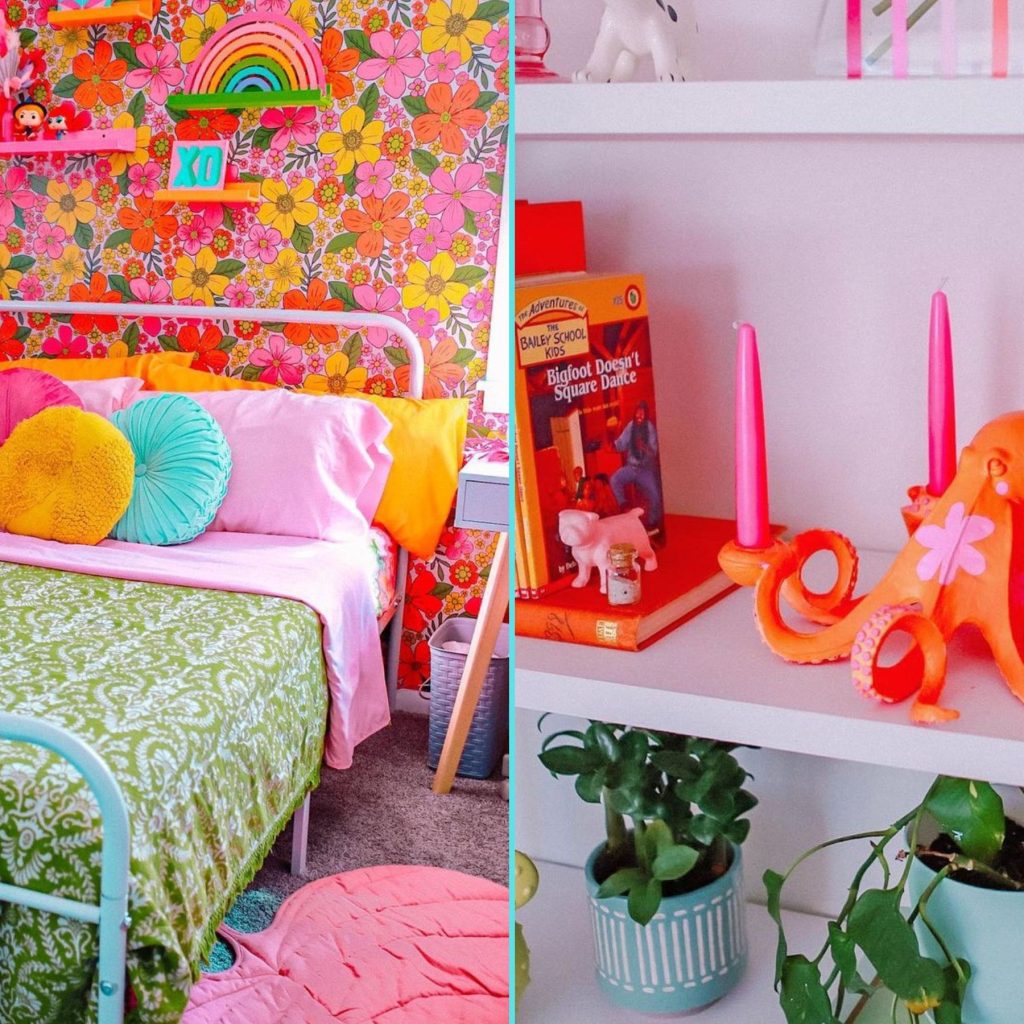
Maximizing Space through Minimalist Techniques
When living in a small area, every square inch matters. To achieve a sense of order and clarity in your home, understanding how to maximize or optimize your space is crucial. Minimalist organization strategies focus on efficiency, showcasing not just how to store your belongings but also how to utilize your environment more effectively. Leveraging the potential of small spaces can elevate your lifestyle, leading to greater satisfaction and less stress.
Implementing smart storage solutions is a cornerstone of minimalist organization. Here are some strategies that can make a significant difference:
- Vertical Space Utilization: Consider installing shelving units that reach up to the ceiling. By directing your focus upward, you free up floor space while also creating a visually appealing design element. Store infrequently used items on higher shelves while keeping everyday essentials at eye level.
- Multi-functional Furniture: Invest in furniture that serves multiple purposes. For instance, a coffee table with built-in storage or an ottoman that doubles as a seat can significantly reduce clutter while maximizing utility.
- Hidden Storage: Look for spaces in your home that can be converted into storage areas. The area under your bed, for example, can be perfect for stowing seasonal items or extra linens. Additionally, consider furniture with hidden compartments—these can be lifesavers in a small space.
- Labels and Organization Bins: Use labeled bins and baskets to categorize and organize items. This not only helps keep things in place but also allows you to easily find what you need without sifting through a jumble of belongings.
Another essential aspect of minimalist organization is effective decluttering techniques. It’s often tempting to hold onto items “just in case” they might be useful in the future. However, this habit can quickly lead to overwhelmed living areas. Here are some effective decluttering methods that can aid your journey:
- The 30-Day Minimalism Game: Challenge yourself to eliminate a specific number of items each day for 30 days. Begin by getting rid of one item on day one, two items on day two, and so forth. This game can make decluttering manageable and even enjoyable.
- Seasonal Purges: Schedule regular purges at the change of each season. Take stock of your belongings and donate or discard items that you didn’t use in the past few months. This proactive approach keeps clutter from building up and helps maintain an organized space year-round.
Moreover, adopting a mindful purchasing strategy can cement your commitment to a minimalist lifestyle. In a consumer-driven culture, it can be oh-so-easy to fall into the trap of acquiring more than we actually need. Instead, consider the following tips to enhance your purchasing practices:
- Quality Over Quantity: Prioritize investing in high-quality items that will last longer over cheaper alternatives that may need replacement sooner. Think less about the price tag and more about the item’s actual utility.
- The 30-Day Rule: When tempted to make a purchase, wait 30 days before deciding whether to buy it. This cooling-off period can help you evaluate whether you truly need the item, thus reducing impulsive buying.
By incorporating these minimalist strategies into your life, you can create a sanctuary out of your small space, transforming it into a haven of organization and tranquility. With time, these methods can not only declutter your living environment but also cultivate a mindset that values simplicity and functionality.
| Category | Benefits |
|---|---|
| Space Optimization | Maximizing usable space through furniture that serves dual purposes can dramatically improve daily function. |
| Clutter Reduction | Creating a minimalist environment helps reduce stress and distractions, leading to improved mental clarity. |
To further grasp the essence of simplifying life, it’s essential to recognize how proper organization in small spaces can elevate your living experience. Utilizing vertical storage solutions, such as wall-mounted shelves and hanging organizers, allows you to take advantage of unused space above eye level. This not only saves floor space but also creates a visually interesting environment.Emphasizing functionality over excess encourages individuals to evaluate their belongings critically. Adopting a “one in, one out” policy helps maintain order and ensures that each item serves a purpose. For instance, consider multi-functional furniture such as ottomans that offer both seating and storage. By integrating these strategies, you create an inviting atmosphere that fosters creativity and relaxation.Understanding the transformative potential of minimalist organization can motivate those in small spaces to embrace these practical solutions. The journey towards a clutter-free home begins with small steps and intentional choices, inviting individuals to explore innovative ideas for a more harmonious living space.
DIVE DEEPER: Click here to boost your daily productivity
Creating a Functional Environment with Zen Principles
As you explore minimalist organization tactics, consider integrating principles inspired by Zen philosophy into your living space. This approach emphasizes simplicity and tranquility while reducing distractions, allowing for a more peaceful and focused lifestyle. Here are ways to infuse Zen principles into your small space:
- Calm Color Palettes: Choose soft, muted colors for your walls and décor. Shades of whites, greys, and earth tones can create a serene atmosphere, making the space feel larger and more inviting. The use of a cohesive color scheme can visually unify your belongings and prevent visual clutter.
- Decluttered Surfaces: Ensure that surfaces like countertops, tables, and shelves remain as clear as possible. This minimal approach helps reduce the feeling of chaos in your home. Keep only essential items on display—think of your kitchen counter as a space for a single, beautiful vase instead of a myriad of utensils.
- Incorporating Natural Elements: Bringing the outdoors in can enhance your sense of calm and connection to nature. Introduce plants into your home, selecting low-maintenance varieties that thrive in smaller spaces, like succulents or peace lilies. Not only do they purify air, but they also serve as a focal point that adds life to an otherwise minimalist setting.
Mindful Space Planning
In addition to adopting Zen elements, it’s essential to embrace a mindful space planning approach. Evaluate the flow of your environment and how your belongings interact within that space:
- Functionality First: Be intentional about the purpose of each area in your home. Zoning can enhance the efficiency of your small space, such as designating a corner as a reading nook or establishing a compact workspace. This awareness creates an environment that feels cohesive and multifunctional.
- Minimalist Décor: When selecting decorations, choose only those that bring you joy or serve a purpose. Each item should contribute positively to your space. Consider artworks that evoke emotion or memories rather than generic wall hangings that might blend into the background.
The Role of Technology in Organization
In the digital age, leveraging technology can significantly streamline organization in small spaces. Various apps and gadgets can aid in maintaining a minimalist environment:
- Digital Decluttering: Create digital folders to archive important documents, photos, and files that would otherwise take up physical space. Consider cloud-based storage to minimize clutter, allowing for easy access without the burden of paper accumulation.
- Home Management Apps: Utilize home organization apps to keep track of your household items. These apps can prompt you to perform regular decluttering and maintain an inventory of belongings, helping to prevent clutter from creeping back in.
The synergy of Zen principles, mindful space planning, and innovative technology keeps your organization efforts fresh and sustainable. Creating a small space that resonates with simplicity can lead to significant improvements in your overall well-being. By acknowledging the importance of both physical and mental clarity, you pave the way for a more intentional lifestyle that prioritizes quality over quantity.
DISCOVER MORE: Click here for minimalist workspace strategies
Embracing Simplicity for a Harmonious Future
In a world that constantly pushes for more—more items, more information, and more commitments—embracing minimalist organization strategies for small spaces can be a liberating choice. By reducing clutter and focusing on what truly matters, you create an environment that not only feels larger but fosters mental clarity and emotional tranquility. The integration of Zen principles serves as a profound reminder that a harmonious space can be achieved through mindful design choices such as calm color palettes, decluttered surfaces, and the inclusion of natural elements.
Mindful planning and intentionality in organizing your space also play critical roles. Designating specific areas for distinct purposes allows for an efficient flow throughout your home, ensuring that each item has a place and promotes functionality. Furthermore, leveraging technology through digital decluttering and innovative organization apps streamlines the decluttering process, making upkeep simple and effective.
Ultimately, by prioritizing quality over quantity, you pave a path toward a lifestyle that values peace, satisfaction, and purpose. As you implement these minimalist strategies, remember that simplifying your life isn’t merely about having less—it’s about creating space for more of what truly enriches you. Dive deeper into this philosophy, and you may discover a new appreciation for the freedom that a well-organized, minimalist environment can offer. Take the first step today, and embark on your journey towards a simplified, stress-free, and fulfilling living experience.
